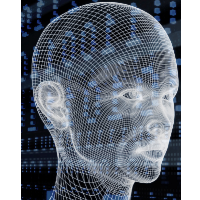San Diego Testing Face Scanners that Make Civil Libertarians Nervous
 (graphic: Electronic Frontier Foundation
(graphic: Electronic Frontier Foundation
It is harder to be an anonymous face in the crowd in San Diego since an unnamed law enforcement agency began using cutting-edge facial recognition software to identify crime suspects and help populate a burgeoning database with images.
FaceFirst, a division of Airborne Biometrics Group headquartered in Camarillo, has developed software that allows computers to almost instantaneously identify unsuspecting passersby shot by cameras, a vast improvement over what used to be a five-minute process.
Law enforcement, the military and government—currently responsible for 70% of biometric expenditures—are excited at the prospect of deploying technology that will allow the capture and storage of facial images of anyone bold enough to venture out in public. And so are retailers, who suffer an estimated $34.5 billion a year in shoplifting losses.
Biometrics is currently a $6.5 billion industry and just getting started. It is expected to increase 50% by 2014.
According to news reports, the anonymous San Diego agency has been testing hand-held FaceFirst devices for months in combination with a database of images already being shared by 51 federal, state and local law enforcement agencies out in the field.
The Federal Bureau of Investigation (FBI) is updating its biometric database of more than 100 million fingerprints with iris scans, face recognition-ready photos and measures of gait and voice recordings. While claiming “it doesn’t threaten individual privacy,” the FBI is proud that “our partners will have the benefit of each capability as soon as it gets our stamp of approval.” The FBI’s partners include law enforcement in six states that joined a pilot program earlier in the year to link local facial recognition with the bureau’s repository of 13 million criminal mug shots.
Civil libertarians, and more than a few U.S. senators, are not so sure about the FBI’s assurances of privacy. U.S. Senator Al Franken (D-Minnesota) noted earlier in the year that there are no laws governing the use of the technology by police and warned of its inherent dangers.
“Facial recognition creates acute privacy concerns that fingerprints do not,” Franken said at a hearing of the Senate Judiciary Committee’s subcommittee on privacy, technology and the law. “Once someone has your faceprint, they can get your name, they can find your social networking account and they can find and track you in the street, in the stores you visit, the government buildings you enter, and the photos your friends post online.” It “could be abused to not only identify protesters at political events and rallies, but to target them for selective jailing and prosecution, stifling their First Amendment rights.”
One of three FaceFirst products touted on the company’s website is a “powerful module” for “monitoring events, large gatherings or dense population areas. It enables almost any SD digital camera or SLR to become an input device to the FaceFirst® system.”
For now, personal privacy is at the mercy of facial recognition practitioners. The Federal Trade Commission (FTC) released a staff report in October with nonbinding guidelines and an admonition that users should “design their services with consumer privacy in mind.”
So if you ever make it down to San Diego for a Chargers football game in 53,000-seat Qualcomm Stadium, make sure to smile. You never know who might be interested in tracking your movements.
–Ken Broder
To Learn More:
California Gets Face Scanners to Spy on Everyone at Once (RT.com)
Instant Facial Recognition Tech a Two-Edged Sword (by Laura J. Nelson, Los Angeles Times)
Instant Facial Recognition Technology Being Tested in San Diego (by Michael Chen, ABC 10News)
Bionic Mannequins Spy on Shoppers to Boost Luxury Sales (by Andrew Roberts, Bloomberg News)
5 Things You Should Know About the FBI's Massive New Biometric Database (by Tana Ganeva, AlterNet)
FBI Agrees to Share Facial Recognition Searches with All Police Departments (by Noel Brinkerhoff, AllGov)
- Top Stories
- Controversies
- Where is the Money Going?
- California and the Nation
- Appointments and Resignations
- Unusual News
- Latest News
- California Forbids U.S. Immigration Agents from Pretending to be Police
- California Lawmakers Urged to Strip “Self-Dealing” Tax Board of Its Duties
- Big Oil’s Grip on California
- Santa Cruz Police See Homeland Security Betrayal in Use of Gang Roundup as Cover for Immigration Raid
- Oil Companies Face Deadline to Stop Polluting California Groundwater





